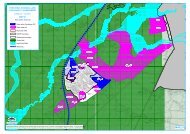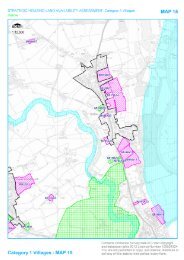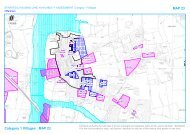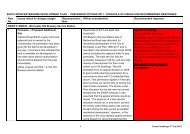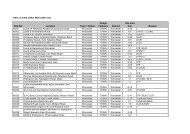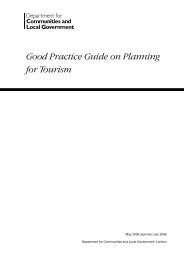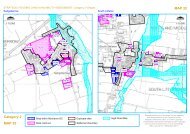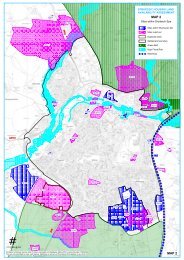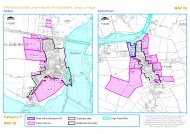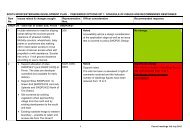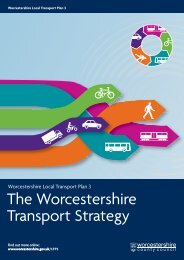Strategic Flood Risk Assessment - South Worcestershire ...
Strategic Flood Risk Assessment - South Worcestershire ...
Strategic Flood Risk Assessment - South Worcestershire ...
Create successful ePaper yourself
Turn your PDF publications into a flip-book with our unique Google optimized e-Paper software.
3 Understanding <strong>Flood</strong> <strong>Risk</strong> in <strong>South</strong><strong>Worcestershire</strong>3.1 Historic floodingThe Level 1 and 2 <strong>South</strong> <strong>Worcestershire</strong> SFRA published in 2009 included an assessment ofhistoric flooding in the county. To summarise, it describes how the most noticeable eventsoccurred in 1998, 2000 and 2007, when several hundred properties flooded on each occasion.The floods in 2000 and 2007 were the largest flood events since 1947. In 2007, flooding wasfrom a combination of fluvial and surface water with over 1,600 recorded incidents of flooding inWychavon alone and nearly 200 properties flooded in Worcester 10 .As described in Section 2.2, <strong>Worcestershire</strong> County Council was required to assess pastflooding as part of the <strong>Worcestershire</strong> PFRA. As part of the PFRA assessment information wasgathered from a number of sources including:Parish CouncilsKey interviewsThe previous SFRAPartner organisations (including, the Environment Agency, Canal and River Trust[previously known as British Waterways] and Severn Trent Water).<strong>Worcestershire</strong> County Council provided their historic flooding dataset for use in this Level 2SFRA. This consists of a point layer of all historic flooding incidents within the <strong>Worcestershire</strong>area and a polygon layer of hotspots.In addition the Environment Agency has supplied their Historic <strong>Flood</strong> Map which is based onaerial photography and ground survey and observations during past flood events.3.2 The study areaThe study area comprises Worcester City and the towns of Evesham, Upton upon Severn,Droitwich Spa, Malvern, Pershore and Tenbury Wells, together with surrounding villages inMalvern Hills and Wychavon Districts. In total, the SFRA covers an area of 1,270km 2 as shownin Figure 1-1.Significant watercourses within the study area include the River Severn, River Avon, RiverSalwarpe, River Tene and Barbourne Brook.The Lower Severn Internal Drainage Board area covers a small part of Malvern Hills District inthe south of the <strong>South</strong> <strong>Worcestershire</strong> area.The M5, M50 and A46(T) are key transport routes passing through the study area. Additionallythe Cotswold and Malvern Mainline and North East to <strong>South</strong> West Mainline run through the area.3.2.1 GeologyThe geology can have an effect on the runoff, and the flooding, within a catchment as a result ofthe permeability of the strata. The geology within <strong>South</strong> <strong>Worcestershire</strong> is variable. According tothe River Severn Catchment <strong>Flood</strong> Management Plan 11 (CFMP), the lower reaches of the RiverSevern flow over Non Aquifer Triassic Mercia Mudstone Group strata and Jurassic Lower LiasClays. The drift gravels at this point allow groundwater to flow from the drift deposits to the riverand vice versa. Impermeable clays and mudstones dominate the Warwickshire Avon subcatchment.10 <strong>South</strong> <strong>Worcestershire</strong> Joint Core Strategy <strong>Strategic</strong> <strong>Flood</strong> <strong>Risk</strong> <strong>Assessment</strong>: Final Report (JBA Consulting, 2009)11 River Severn Catchment <strong>Flood</strong> Management Plan: Summary Report (Environment Agency, 2009)2012s5947 S <strong>Worcestershire</strong> Level 2 SFRA Update FINAL Report v1.0.doc 18




